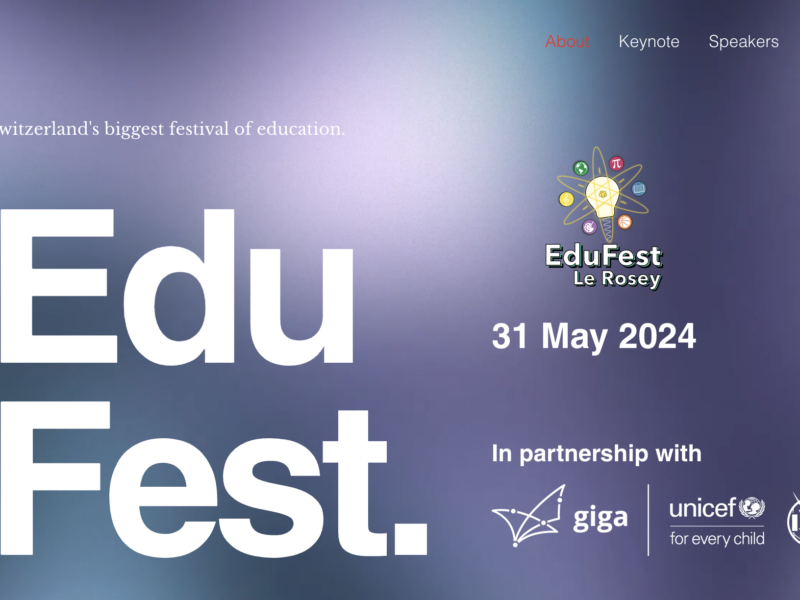The SGIS Conference 2025 was held at Leysin American School on 6-8 March. I felt very fortunate to have attended the Pre-Conference on Thursday 6th, where Nancy Lhoest-Schiaciarinni (ECIS) led the opening session: “The Power of Facilitation”.
I enjoyed the session very much. I share my notes and additional comments below (in outline form) as I believe the content of this session is applicable to all leaders, and immediately actionable by middle leaders at my school.
I. Think of meetings as an opportunity to “elevate the collective wisdom”. If your meeting won’t do that, consider whether a team meeting is the right format to achieve your objective:
- Do you intend to disseminate information to your team? Send an email.
- Do you intend to collect information from your team? Send out a survey, a Padlet, a shared Document or any other format that requires individuals to input independently.
- Do you intend to chat individually with members? Schedule those conversations separately.
II. Organise the meeting to maximise inclusive, thoughtful participation.
- Schedule meetings more than a week in advance: avoid surprising your team members with last-minute gatherings.
- Send agendas at least 3 days before the meeting.
- Consider whether the item needs to be on the agenda in the first place (see point I).
- Give people time to think about topics in advance: send out relevant articles, videos, etc. days ahead to allow member to process content before the meeting.
- Let team members know if you’ll be requesting their feedback at the session, especially if there is research/thinking to be done in advance.
- If you want someone to speak/deliver content at the meeting, tell them in advance. Don’t put people on the spot.
- Create your slides/ audiovisual materials intentionally.
- Reduce the amount of text. If you need others to read from a slide, stand to the side in silence– do not interfere with people’s natural pace for reading and processing. Consider processing speed for those who are working in their second (or third, or fourth) language.
- Images are better than words, especially if they convey meaning through metaphor or story. (This blog entry includes free stock photo sites. Thank you, Ewan McIntosh, for the tip!)
- Consider sharing the slides in advance so your audience does not have to write/copy and can focus on the cognitive process you intended.
- If you deliver instructions (for activity) keep the visible for people to refer to during the activity. Consider organising the slide under 3 headings: Why? (purpose/objective) What? (product) and How? (process).
- Think carefully about written/printed materials.
- Is it necessary?
- Is it confidential?
- What will you want participants to do with it during the session?
- What will you want participants to do with it after the session?
- Consider that your attendees will be wondering:
- Why am I in this meeting?
- What is my role in this meeting?
- What are we doing during this meeting?
Plan to ensure that these questions are answered in advance or during the meeting.
III. Facilitate the meeting with Heart- Head- Hands components.
- Heart: Focus on purpose, belonging and objectives. (Ex. open with an inclusion activity, to emphasize connection among your team. However, the connection is professional—“ice breakers” or activities that promote “let’s be vulnerable together on a personal level” are inappropriate.)
- Head: Focus on process, analysis and understanding to “build collaborative intelligence” instead of emphasizing individual skills. (Ex. brainstorm, design guiding or essential questions, prioritize goals, conduct a SWOT analysis, etc.)
- Hands: Focus on results, application and next steps. Always return to key questions: “How will this decision impact my practice?” “How will this decision improve student learning?” (Ex. to-do list with time scale and responsibilities, agreed objectives and actions, etc.)
- Another way to remember Heart-Head-Hands is Connect-Collect-Commit.
- Remember the importance of building a culture of collaboration: according to Neil Fogarty, psychological safety is achieved when relationships, processes and results are in equilibrium. Key ideas to reflect on as a facilitator:
- Make psychological safety an explicit priority for your meetings.
- Facilitate to promote everyone speaking.
- Develop a culture of feedback (see below).
- Create space for new ideas.
- Embrace productive conflict.
- Recognize the natural steps in group process, including what Sam Kaner calls the “groan zone”, a key phase as a team progresses from Introduction through Divergent, Emergent and Convergent phases to Closure. Acknowledge the full range of perspectives voiced by your team in order to reach the most creative and inclusive solutions. (This short article from Voltage Control suggests strategies to “navigate the groan zone”.)

Source: https://www.nceas.ucsb.edu/sites/default/files/inline-images/Kaner_groan_zone_adapted_by_CKappel_small.jpeg
IV. Collect feedback from participants. If you want to be a successful facilitator, ask participants for constructive feedback on the meeting and on your facilitation, and assume positive intent as you review their response. Some formats:
- Exit ticket (quick written answer on a post-it or poster)
- Survey (to be sent after the meeting)
- Questionnaire (to be sent at the end of the year—more general)
- Analogies (promotes deeper understanding and can help surface discomfort). Example: Use one of the images below to respond to the prompt: Which of the following images best captures (how you’re feeling about this topic/ your learning at this point in time/ how you feel at the end of this meeting, etc.)

Source: Lhoest-Schiaciarinni, Nancy. “The Power of Facilitation”. Presentation. Leysin: SGIS Conference, March 2025.
V. What next? (To my colleagues.) Test any of these strategies, reflect and tweak. Better yet, let’s chat if you would like to implement them as part of your PLP!
